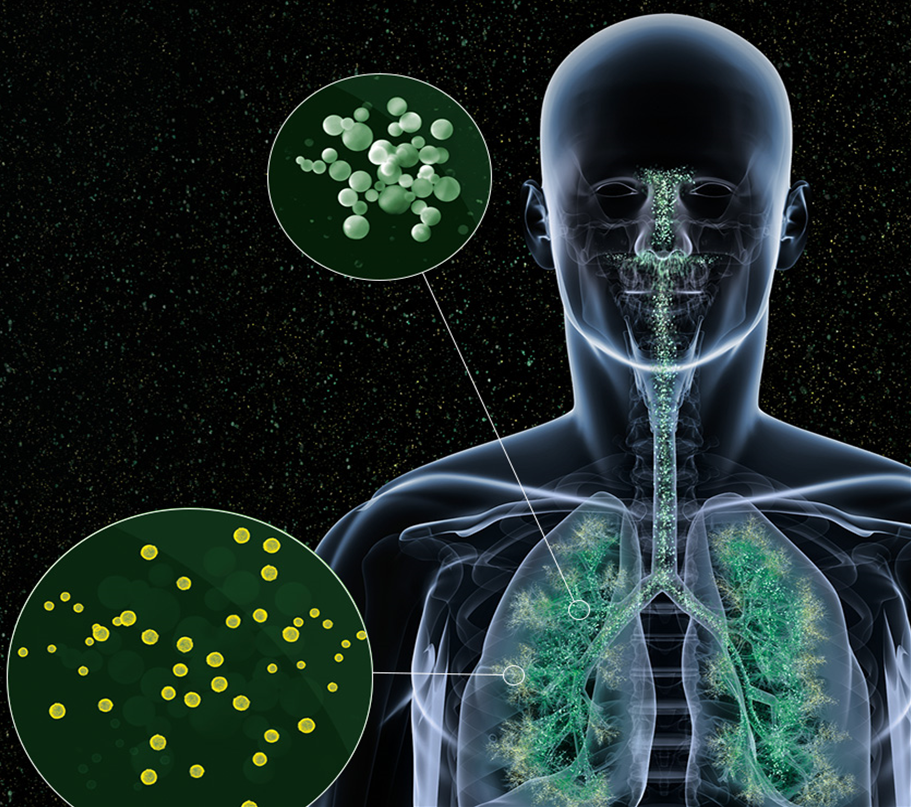By Steve McLeod: CIEC, IEP, MGBS, KION
What Is Respirable Particulate Matter?
The term ‘respirable particulate matter’ refers to the tiny particles in the air that are small enough to be inhaled into the deepest parts of our lungs. This is significant because the smaller the particle, the deeper it can penetrate our respiratory system, potentially causing various health issues.
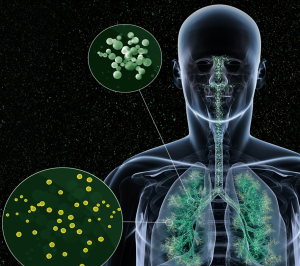
Particulate Matter, abbreviated as ‘PM,’ is a complex mixture of extremely small particles and liquid droplets. PM is categorized by their diameter, which is measured in microns. The most discussed categories are PM10, PM2.5. and ultrafine.
As we move from PM10 to PM2.5 and then to ultrafine particles, the health risks increase due to the particles’ smaller size, greater prevalence, and deeper penetration into the body. This progression highlights the importance of understanding and controlling various particle sizes to maintain optimal indoor air quality and protect overall health.
PM10: Understanding the Smaller Yet Significant Threat
PM10, or particulate matter with diameters of 10 microns or smaller, is a significant indoor air quality concern, capable of evading the body’s natural respiratory defenses and reaching deep into the lungs. These fine particles commonly include mold spores, often emanating from HVAC systems or infiltrating from crawl spaces and attics. In addition, PM10 in homes often comprises dust mites and cockroach fecal matter, and particles resulting from the breakdown of plastics in carpets and household fabrics due to regular use or movement.
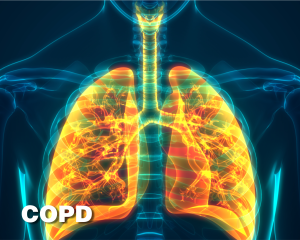
When individuals inhale PM10, they may experience immediate symptoms such as coughing, wheezing, and eye irritation.
Persistent exposure can lead to more severe, long-term health issues, including Sinusitis, Asthma, Chronic Obstructive Pulmonary Disease (COPD), inflammation, and early onset Alzheimer’s The mold spores within PM10 are particularly problematic, as they can provoke inflammation and aggravate existing conditions and inhibit recovery.
Moreover, PM10 particles have the propensity to carry various chemicals, binding with these harmful substances and serving as a vehicle for their entry into the body. This interaction poses an elevated risk of chemical exposure, leading to health effects that extend beyond the immediate impact of the particulate matter itself. Common symptoms may include brain fog, headaches, sleep disturbances, hormonal imbalances, and cancer.
Given their diverse and often microscopic origins, PM10 particles represent a complex mix of allergens and irritants.
PM2.5 Pollution: Enhanced Risk and Prevalence
PM2.5 particles, significantly smaller than PM10, consist of fragments of PM10 materials and other contaminants, but carry heightened health risks. This increased risk stems from their finer size, and abundance in the environment, as they are significantly more predominant in indoor environment than PM 10. Since PM2.5 can penetrate deeper into the lungs compared to PM10 and are more likely to assimilate into the bloodstream This makes them more of a health risk. This deeper penetration significantly affects not just the respiratory system but also the immune system and overall health.
The sources of PM2.5 are akin to those of PM10, including mold fragments, emissions from cooking and smoking, and breakdown of household materials. However, their smaller size means they can remain suspended in the air for longer periods and infiltrate more deeply into the body’s tissues. This leads to an increased likelihood of respiratory issues like asthma and chronic bronchitis, and symptoms such as coughing and wheezing. The cardiovascular risks are also more pronounced with PM2.5, heightening the chances of heart attacks, strokes, and hypertension.
PM2.5 Pollution: Enhanced Risk and Prevalence
PM2.5 particles, significantly smaller than PM10, consist of fragments of PM10 materials and other contaminants, but carry heightened health risks. This increased risk stems from their finer size, and abundance in the environment, as they are significantly more predominant in indoor environment than PM 10. Since PM2.5 can penetrate deeper into the lungs compared to PM10 and are more likely to assimilate into the bloodstream This makes them more of a health risk. This deeper penetration significantly affects not just the respiratory system but also the immune system and overall health.
The sources of PM2.5 are akin to those of PM10, including mold fragments, emissions from cooking and smoking, and breakdown of household materials. However, their smaller size means they can remain suspended in the air for longer periods and infiltrate more deeply into the body’s tissues. This leads to an increased likelihood of respiratory issues like asthma and chronic bronchitis, and symptoms such as coughing and wheezing. The cardiovascular risks are also more pronounced with PM2.5, heightening the chances of heart attacks, strokes, and hypertension.

In addition, exposure to PM2.5 may lead to immediate or short-term symptoms such as brain fog, memory loss, and mood disruption, particularly noticeable upon entering a building and within the first half-hour of exposure. These cognitive issues underscore the need for heightened awareness and control of PM2.5 pollutants in indoor environments
Ultrafine Particles: A Step Further in Impact
Moving to even smaller particles, ultrafine particles represent the most insidious threat to indoor air quality. Being smaller than 0.1 micron, they exceed PM2.5 in their ability to penetrate biological barriers and are the most predominant in the air. These particles are so fine that they can easily bypass the body’s defenses and reach the innermost areas of the lungs and even enter the bloodstream.
Ultrafine Particles: A Step Further in Impact
Moving to even smaller particles, ultrafine particles represent the most insidious threat to indoor air quality. Being smaller than 0.1 micron, they exceed PM2.5 in their ability to penetrate biological barriers and are the most predominant in the air. These particles are so fine that they can easily bypass the body’s defenses and reach the innermost areas of the lungs
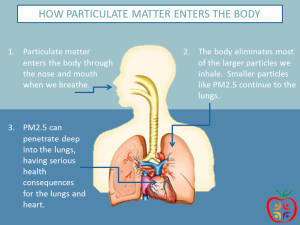
and even enter the bloodstream. Ultrafine particles can carry harmful substances such as viruses, bacteria, and endotoxins. This makes them not only carriers of physical particulates but also potential vectors for biological pathogens. Their presence in the bloodstream means they can quick and widespread effects on the body, impacting the immune system and contributing to systemic health issues like cardiovascular diseases, and neurological disorders, such as Alzheimer’s.
The sources of ultrafine particles are diverse, including fragments at pm 10, and pm2.5 in addition to industrial and vehicular emissions, chemical reactions from household products, and even electronic devices. The management of ultrafine particles is a critical aspect of air quality control, requiring advanced filtration strategies and a comprehensive maintenance approach to indoor pollution.
Particulate Matter in Indoor Environments: Understanding the Big Four Contaminants
As we explore the intricate world of indoor air quality, it’s crucial to recognize the ‘Big Four’ contaminants – mold spores and fragments, plastic fragments, chemicals, and radon. These common yet often overlooked pollutants play a significant role in the degradation of our indoor environments, directly impacting our health and well-being.

- Mold Spores and Fragments: Mold, a frequent inhabitant of damp and poorly ventilated spaces, releases spores and fragments into the air. These can trigger allergic reactions, respiratory issues, and weaken our immune response.
- Plastic Fragments: The breakdown of plastics found in household items releases microscopic particles. These fragments can carry toxic additives and disrupt endocrine function, impacting our hormonal balance.
- Chemicals: Volatile organic compounds (VOCs) emitted from paints, cleaning products, and furnishings, among others, contribute to a chemical cocktail in our indoor air. Prolonged exposure can lead to headaches, fatigue, and more serious long-term health effects.
- Radon: This colorless, odorless gas, emanating from certain building materials and the ground, is a known carcinogen. Persistent exposure, especially in closed crawl spaces, basements, and poorly ventilated homes, can dramatically increase the risk of lung cancer.
The Impact of Indoor Contaminants on Health and Energy: Inhaling these contaminants can rob us of vital energy, mental clarity, and the ability to rest deeply. They contribute to a range of health issues, from minor discomforts like headaches and fatigue to more severe conditions like respiratory diseases and hormonal imbalances. The psychological impact is equally significant – living in a space where the air is laden with invisible threats can erode our sense of safety and well-being.
The Challenge of Modern Homes: Modern homes, built to be energy-efficient, often lack adequate ventilation. This tight construction traps contaminants inside, leading to higher concentrations of these harmful particles. Without proper ventilation, the indoor air becomes a reservoir for the Big Four contaminants, escalating the risk to our health.
The Toxic Nature of Household Dust
Household dust, a mix of PM2.5, PM10, mold fragments, insect parts, nano plastics, and synthetic fibers, can be a toxic blend. External pollutants like pollen and pesticides, along with radon decay products, add to its complexity.
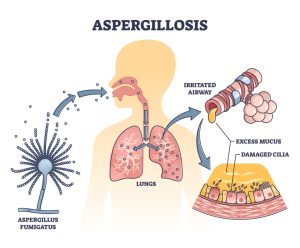
Health Impacts
Health risks associated with this dust mixture include respiratory ailments like mold aspergillosis and worsened sinusitis. Research links it to heart disease, Alzheimer’s, and Chronic Inflammatory Response Syndrome (CIRS), with prolonged exposure potentially leading to more severe chronic conditions.
The Clear Benefits
Managing the levels of these particles through advanced HEPA filtration and cleaning reduces respiratory irritation and infection risks, fostering a healthier living environment, especially for those with sensitivities.
Managing Environmental Risks with Advanced Filtration Systems:
To counter these risks, the use of advanced HEPA air filtration systems is a crucial strategy. These systems are designed to effectively capture a wide range of particulates, including ultrafine particles, thereby significantly reducing the concentration of contaminants in the air. By integrating advanced air filtration into our homes, we can actively manage and mitigate the environmental risks posed by the Big Four, ensuring a healthier and more energizing living space.
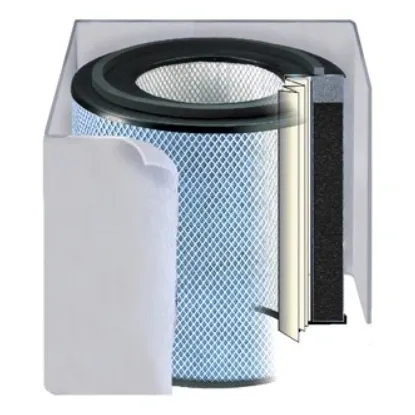
In the next section, we will delve into the effective use of advanced HEPA air filters, exploring how they can be a cornerstone in our strategy to reclaim the purity of our indoor air and safeguard our health and well-being.
Advanced HEPA Filtration: Enhanced Efficiency without Extra Costs
The evolution from traditional HEPA filters to Advanced Filtration systems not only broadens the scope of air purification but also introduces a more cost-effective approach to maintaining indoor air quality. Standard HEPA filters, recognized for capturing 99.97% of particles as small as 0.3 microns, have set a high benchmark in air purification. However, Advanced Filtration systems, capturing particles down to 0.1 microns, offer superior performance, particularly against ultrafine particles, which are more prevalent and harmful in indoor environments.
Advantages of Advanced Filtration Over Standard HEPA:
- Wider Range of Particle Capture and Enhanced Protection
- The ability to capture particles as small as 0.1 microns makes Advanced Filtration systems more effective against health-threatening ultrafine particles, including viruses and bacteria.
- No Need for UV Bulbs: One of the significant advantages of Advanced Filtration is the elimination of the need for UV bulbs. In traditional air purification setups, UV bulbs are used to deactivate viral and bacterial contaminants. However, with Advanced HEPA filters efficiently trapping these particles, the additional cost and maintenance of UV bulbs become unnecessary. This not only reduces ongoing expenses but also alleviates concerns about UV light degrading the filter material.
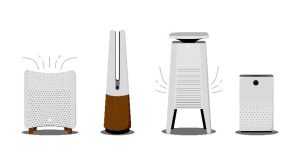
- Selecting the Right Air Purification System:
- When choosing an air purification system, it’s essential to consider not just the particle size that the system can capture, but also the total cost of ownership, including maintenance expenses. Systems with Advanced HEPA filtration offer a balanced solution by providing superior air quality without the added costs and maintenance of UV light systems.
Economic and Maintenance Benefits:
- Reduced Filter Maintenance Costs: The absence of UV bulbs in Advanced Filtration systems simplifies maintenance, as there is no need to replace UV bulbs periodically.
- Long-Term Cost Savings: While the initial investment in an Advanced Filtration system might be higher than standard HEPA filters, the overall cost savings in maintenance, especially from not having to replace UV bulbs, make it a more economical choice in the long run.
In the next section, we will explore the important factors when selecting an air filtration system. This includes selecting advanced HEPA filtration in conjunction with how much air the unit can filter, how many times air will be filtered within an hour and the importance of placement and operation. These considerations are pivotal in getting the best value and effectiveness from your air filtration.
Optimizing Advanced HEPA Air Filters: Navigating CFM, CADR, and eACH for Indoor Air Quality

Maximizing the effectiveness of Advanced HEPA air filters in indoor environments involves a keen understanding of three critical metrics: the air filter’s Cubic Feet per Minute (CFM) capacity, the Clean Air Delivery Rate (CADR), and the Equivalent Air Changes Per Hour (eACH). These factors are essential in assuring efficient and effective air purification, independent of traditional ventilation systems.
- The Interplay of CFM, CADR, and eACH:
- CFM – Key to Filtration Speed: The CFM rating measures the volume of air an air filter moves per minute. A higher CFM leads to faster air cleaning, resulting in more air filtration cycles within an hour. Consider the trade-off between higher CFM and potential noise increase.
- Room Size and CFM: The right CFM is vital for larger rooms, ensuring enough air is purified per hour.
- CADR’s Link to CFM: CADR shows how efficiently an air purifier cleans air relative to room size. A higher CFM generally means a better CADR in larger spaces, directly reflecting the filter’s capacity to clean the air multiple times in an hour.
- eACH for Practical Filtration Assessment: eACH goes beyond CADR by considering how well contaminants are drawn to the filter for removal, factoring in room layout, furniture arrangement, HVAC system influences, occupant activities, and noise levels.
- Strategic Air Purifier Placement:
- Efficient Placement for Optimal Performance: The air purifier should be strategically located to maximize efficiency, considering aesthetics, minimal electromagnetic field exposure, noise reduction, and unobstructed air circulation. This enhances eACH efficacy.
- CADR as an Indicator of Filter Efficiency:
- CADR – Measuring Filtration Capabilities: CADR quantitatively assesses an air purifier’s ability to eliminate pollutants like smoke, dust, and pollen. A higher CADR indicates a more proficient air purifier in handling larger air volumes.
- Balancing eACH with Operational Dynamics:
- Fine-tuning eACH: Achieving optimal eACH requires considering both CFM and CADR in line with the room’s and occupants specific needs.
- Noise and Timing Management: Attaining a high eACH is beneficial but should be harmonized with noise considerations. Utilizing timers can help manage purifier operation based on occupancy patterns, activity levels, and desired quiet times.
- Adapting to the Environment:
- Customizing Operation for Specific Goals: Adjust the air purifier’s usage to suit specific needs, such as reducing pollution levels within certain timeframes, and adapting to different room activities to maintain ideal high eACH.
Conclusion: Maximizing Air Quality with Informed Choices
Grasping the intricacies of CFM, CADR, and eACH is crucial for the effective selection and utilization of Advanced HEPA air filters. This informed approach guarantees not only thorough air purification but also contributes to a more comfortable living or working environment. By focusing on these vital metrics prior to purchasing an air purifier, you enhance your chances of achieving a pristine and healthful indoor atmosphere in a cost-effective manner.

The presence of respirable particulate matter and harmful elements in household dust poses a substantial health risk. Implementing advanced HEPA filters in air purification systems, coupled with rigorous cleaning practices, can substantially reduce these hazards. This ensures significantly healthier air quality within indoor spaces. Staying educated and proactive about air quality management is a critical step in protecting the well-being of inhabitants in any indoor environment.

